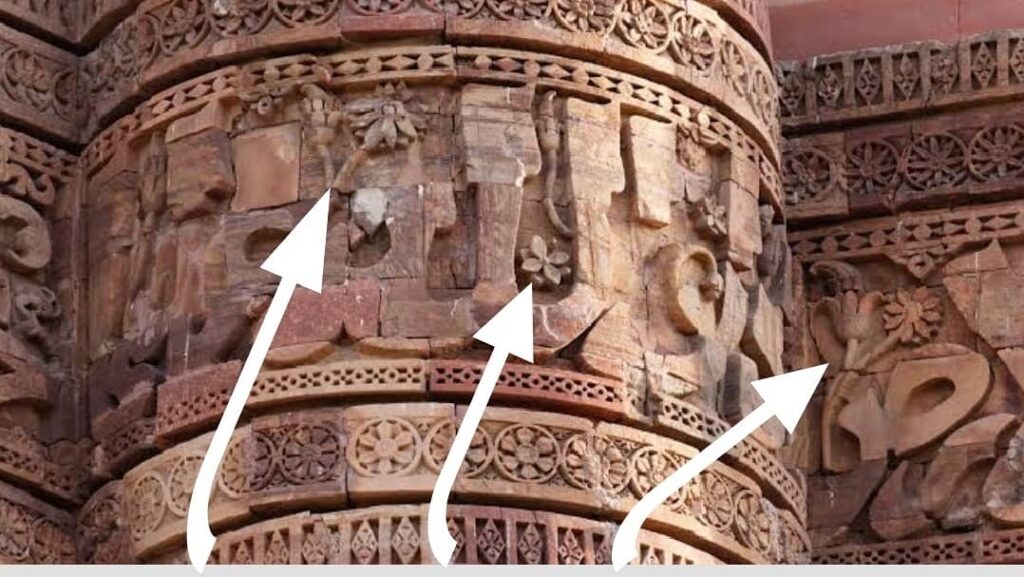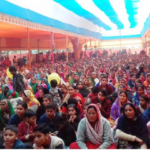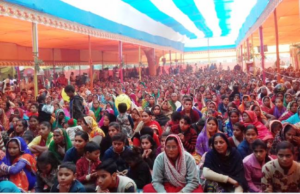People from all over the country and the world often visit Delhi’s Qutub Minar, take selfies, stick them on their social media accounts. But how many people know that there are still two idols of Lord Shri Ganesh ji, one upside down and Ganesha imprisoned in a cage? However, now BJP leader Tarun Vijay said that the idols of Ganesh ji placed in ‘derogatory’ manner in the Qutub Minar complex should either be removed or they should be respectfully reinstalled.
Tarun Vijay in a tweet also questioned what happened to the 27 temples which are believed to be located inside the complex? Why were the idols of Tirthankara, Yamuna, Dashavatar, birth of Krishna and Navagraha never shown to tourists?
Now can it be assumed that 27 temples were demolished in the Qutub Minar complex? After the same demolition, these idols of Lord Ganesha were kept here in a degrading manner! Although some people believe that Qutubdin Aibak built Qutub Minar only after destroying 27 temples. But the question is also, did such a high tower came out of clear square stone temples?
If this tower was built by demolishing the temple, then even the stones would have been ludicrously attached to the tower? Whereas the stones in it are very soft. In fact, if you look carefully, the verses of the Quran inscribed on the minaret are a forced handwriting, which is completely written from above on the beautiful hieroglyphic stripes of Hindu design. In the context of the verses of the Qur’an, if it is to be termed as the creation of Qutubdin or his son-in-law, Iltumis, it would be in the same way. It is as if a non-Muslim is forcibly circumcised and made a Muslim.
It is clear from this that Qutub Minar is not an Islamic construction, but it is a construction of thousands of years before that. Qutub Minar or the Iron Pillar present there is one such pillar, which was defiled and manipulated to give it another name. There are such evidences and written documents in history on the basis of which it can be proved that Qutub Minar is a Hindu building, Vishnu Stambha. It was a Hindu tower that existed hundreds of years before Qutubuddin. Therefore it would be wrong to link its name with Qutubuddin, yes it would be correct history to break it by Qutubuddin.

Historians tell that there was a famous astronomer named Varahamihira who was in the court of Vikramaditya in Mehroli, Delhi. He was accompanied by his assistants, mathematicians and technicians. These people used to use this tower i.e. Hindu Nakshatra Observation Center for astronomical calculations, studies. And for this purpose it was built by King Vikramaditya. Whose real name is said to be Dhruv Stambha. But by hired historians, it was written by Qutub Minar to be built by Qutubuddin Aibak, the slave of Mohammad Ghori, for Muslim appeasement.

Looking at this matter, in fact MS Bhatnagar has written two articles about it. In which there is complete information about its origin, nomenclature and its history, and has also exposed the fake historians that how and why “Dhruv Pillar” was made Qutub Minar.
It is true that after the death of Sultan Ghori, Qutubuddin was made Sultan in Lahore. He ruled from Lahore, not from Delhi and eventually he also died in Lahore. Why did he build the Victory Stambh in Delhi when his capital was Lahore? Now some people may say that it is not a victory pillar but a “majina”, which means it is the tower of the minaret muezzin. Sitting from here, he would have given azaan. The question is, when this so-called “muezzin” tower and mosque were built, it is obvious that the builders must have been the same, so why now the mosque has turned into ruins and why its muezzin’s tower stands proudly? Maybe no one has any answer for this question. The reality is that Masjid and Majina are a completely rubbish story. The so-called Qutub Minar and the ruined mosque may not have the same builders as the minaret.
That’s why historian MS Bhatnagar writes that Qutub Minar was earlier called “Vishnu Pillar”. Earlier it was called “Surya Pillar”. At its center was the pole pillar, which is today called Qutub Minar. Around it were 27 circles based on 27 constellations and it was built under the supervision of Varahamihira. It was used for celestial, celestial and divine activities.

Even today, if you look at the top of the tower from an aeroplane, you can see the various galleries sliding into each other from top to bottom and they look like a 24 petal lotus in full bloom. The number 24 is considered sacred in the Vedic tradition. The red color of the tower’s bricks is also considered sacred among Hindus.
Also around this tower were mandapas or domed buildings for the 27 constellations or constellations dedicated to the Hindu zodiac. In a description of Qutubuddin he wrote that he had destroyed all these pavilions or domed buildings, but he did not write that he had built any minaret. The temple which he had destroyed and corrupted, gave the name of “Quwwat-al-Islam” mosque. On one side of the stone removed from the so-called Qutub Minar were Hindu sculptures, while on the other side it has letters in Arabic. These stones are now kept in the museum.
That is, it has been decided that Qutub Minar was not built by Qutubuddin Aibak or Iltumis, then the question becomes, then how was it built in their name?
Actually Sultan Ghori’s slave Qutbuddin Aibak was a robber, along with Ghori had come to India to run jihad. Who was later given permission to run Jihad in India permanently by making him in charge of India. During which he only looted and destroyed temples in India. When he reached Delhi while doing jihad, seeing such a big and beautiful pillar there, his mouth was left wide open. And, he asked his companions, what is this?
On this his companion told in Arabic language that “Huzur Yeh is the observation center of Qutub Minar, that is, the North Pole.” It was from here that he and his brave companions started calling it Qutub Minar- Qutub Minar. Whereas Qutubuddin Aibak has not said anywhere to himself that he has built Qutub Minar. But he has admitted that he destroyed the 27 temples built around this pillar.
But later historians, after seeing the similarity in the names, came to the conclusion that this Qutub Minar must have been built by Qutubuddin Aibak. Now if the historians are asked, the first question is that Qutubuddin was able to do jihad in India only for 4 years and could Qutubuddin have built such a huge tower in his very short reign from 1206 to 1210? Whereas the first two years he spent in Lahore to eliminate the opponents. And, even before he died in 1210, he was still in Lahore?

Second, if this is an incident before 800 years, then how knowledgeable the jihadis of that time will be, how educated they will be, you can guess by looking at the Talibani jihadis of 2022 that in 2022 the drummers and drummers swinging on the wings of the helicopters, 800 from today Years ago, were there such great architectural masters or scientists that they would have built a building like Qutub Minar?

Now it is also taught that Qutubuddin had built only one floor, the latter being built by Iltutmish. If Qutubuddin had started building the minaret in 1193, it should have been named Ghori Minar after Emperor Ghori, a slave built a minaret in his name and Emperor Ghori kept watching.
In fact, during the reign of Raja Anangpal Tomar and Prithviraj Chauhan, many temples and buildings were built around it, which were demolished by Muslim attackers as soon as they entered Delhi. Qutbuddin definitely broke the temple and got a mosque named ‘Qubat-ul-Islam’ built there and Iltutmish broke the sun pillar and gave it the form of a minaret.
Now even though it is written there that this tower was damaged in 1326 and it was repaired by Muhammad bin Tughlaq. After this, in 1368, Firoz Shah Tughlaq removed its upper storey and added two more storeys to it. Whereas the truth is that the Muslim rulers changed its name and removed some Hindu symbols from it, whose marks can be seen even today. On the pillars of these circuits, idols of gods and goddesses were carved with subtle workmanship, which are visible somewhere even after being destroyed. The biggest living proof is these two idols of Lord Ganesha, which can be seen there as an insult even today. Simultaneously, the Iron Pillar at Mehrauli has been a silent witness to various struggles without rusting and narrates the story of our pride and prosperity. It was a cultural genocide by Jihad and now this history has to be reversed.
BY-RAJEEV CHOUDHARY







More Stories
Who is the real king of Middle East Gulf countries?
Hyderabad Movement when Arya Samajis came out against Nizam
How are shrines and mosques growing in the lap of the Himalayas.